Protecting Our Food: Effectively Tackling Food Fraud
Geo-political and “black swan” events in the last couple of years have re-emphasised how crucial it is for the global food supply chain to be strengthened.
With the curtain now falling on a year of global elections, it remains to be seen how trade and policy will affect what and how we eat.
The massive uptick of Artificial Intelligence solutions has created a deluge of information overload to the point that roughly only about 30% of data in Enterprises is actually used.
Finally, and unfortunately, rising costs across manufacturing and delivery also mean we need to be more vigilant than ever against bad actors in the supply chain who are motivated by economic gain rather than moral concern to the end customer that what they produce is safe.
Where food fraud does occur, it can quickly undo a significant amount of good will for all good faith actors otherwise.
With fraudulent activities ranging from the misrepresentation of a product’s origin to the blatant substitution or imitation of the product itself, the impact is widespread, affecting everything from economic stability to wider public safety.
Addressing this issue requires a multi-faceted approach involving stringent regulations, advanced technologies, and collaborative efforts across the entire supply chain.
In this blog, we’ll explore the key challenges posed by food fraud, examine most common high-risk products, and highlight effective strategies to strengthen food supply integrity and restore consumer confidence in the products they purchase.
Understanding the Threat of Food Fraud
Food fraud, as defined by the UK Food Standards Agency, involves “deliberately placing food on the market, for financial gain, with the intention of deceiving the consumer.”
Such practices can be harmful to consumers, who may be misled about the authenticity of food or animal feed, often at the risk of their health.
Factors such as intense and increasing cost-cutting pressures on suppliers and the potential for substantial profits have unfortunately resulted in food fraud becoming a more common practice.
Sometimes it can be as ‘innocuous’ as an ingredient being called something it’s not, such as “Manuka honey” from a different region or plant to where it is native, or outright replacement of ingredients such as saffron being substituted for turmeric or safflower.
In more severe cases, its practice can result in tragic outcomes.
Events such as the Melamine scandal or Horsegate highlight the need for rigorous monitoring and enforcement.
Food fraud typically occurs under the following scenarios:
- Substitution or addition of materials to falsely enhance product value or cut production costs.
- Dilution or misrepresentation of ingredients, creating misleading perceptions about quality or origin.
- Misleading labelling or false claims about product attributes.
Certain products are subject to a higher risk of food fraud due to their economic value, production complexity, or susceptibility to adulteration.
Items like olive oil, fish, organic products, dairy, grains, honey, maple syrup, coffee, tea, spices, wine, and fruit juices are common targets.
Olive oil, for instance, often faces adulteration with cheaper oils due to its high market value, while the diversity of wine varieties makes it an easy target for dilution or counterfeiting.
As global food markets grow, ensuring the integrity of food products becomes increasingly vital, with consumer trust and health at stake.
Proactively Addressing Fraud
There are two keys things to consider for beginning to tackle fraud; these are 1) what can be done on a micro level (i.e., within your own supply chain), and 2) what can be done on a macro level (i.e., globally).
At a local site level, it is paramount to remember that for fraud detection and horizon scanning to be effective, it cannot be something static.
The dangers and threats in this area is constantly evolving and so a proactive approach that reflects reality and acceptance of this should be the norm.
In the same way that a HACCP or Food Defense plan would be updated following a process change, so should your TACCP and VACCP whenever there is a supplier or product change.
Active monitoring and threat detection from reputable sources such as EFSA or tools like Fera’s Horizon Scan should be considered.
The good news is that there are many active agencies and departments tackling this issue at regional levels which can support you while also cumulatively constituting a robust global framework, albeit one with some vulnerabilities.
In the United Kingdom, the National Food Crime Unit is a part of the Food Standards Agency which covers incidents within England, Wales and Northern Ireland, while working closely with the Scottish Food Crime and Incidents Unit.
With a mandate to address Food Crime, it specifically focuses on:
- Adulteration
- Substitution
- Misrepresentation
- Unlawful Processing
- Waste Diversion
- Document Fraud
- Theft
While the FSA’s core responsibility is to safeguard public health in its area of remit, it does have handy tools and practices that can be applied no matter where you are based.
Speaking earlier this year at the BRCGS conference in London, one of the tools it advocates for detecting fraud is a handy mnemonic for categorising threats: F-O-O-D C-R-I-M-E-S.
These are areas where threats can occur and where we must be vigilant, and include:
- Financial Incentives – What are the financial motivators for crime?
- Opportunity – Does the actor in your supply chain have the opportunity to commit fraud? Where are these flashpoints and what can be done to minimise or remove them?
- Organisation – Does the organisation have an anti-fraud culture? Is every employee trained to spot and flag any product issue with the organisation?
- Documents – How are documents verified to guarantee the authenticity of products during the receiving process?
- Concealment of True Origin – How are then the documents approved, used to verify the concealment of true origin?
- Reputation – What do you know about the suppliers and traders that you are working with? Are they new to you? Have you carried out other checks prior working together and have you asked questions about them in your network?
- Intent to Defraud – Was there any deliberate intent to deceive the outcome?
- Market Drivers – What are the demand trends and trust factors for the sourced product? Are there peak periods when the product might face a higher risk of adulteration, and how could these factors impact your product? Additionally, how can horizon scanning help to prevent negative impacts on products?
- Examples – How might external events impact your business, and would your current processes enable you to detect them? For example, with the war in Ukraine leading to higher tariffs on certain Russian products, is there a risk of misrepresenting the country of origin to bypass these tariffs? What best practices are in place to identify and manage such risks?
- Smart – Are the current processes effective, and is the company actively evolving and enhancing best practices to prevent food crimes?
Considering the above will allow any business to gather and structure their intelligence, conduct thorough investigations, engage with their stakeholders to shore up weaknesses, implement more robust checks and processes, and internalise a more cohesive culture in their organisation that fosters continuous improvement.
What other proactive steps can you take to mitigate fraud?
Efforts from organisations like the NFCU play a crucial role in safeguarding the integrity of the food supply chain and protecting public health and consumer interests.
However, we cannot rely on these as a sole measure.
A guiding principle for everyone should be the WHO’s mantra of 2019 that “food safety is everyone’s business”.
If you are an actor or an agent involved in the creation, supply, manufacturing, distribution or service of food, you are responsible for its authenticity just as much as its safety.
In an age of big data and over whelming news cycles, it can be difficult knowing where to get started.
Depending on what part of the supply chain you are involved in, there are multiple options you can consider.
Applications such as Horizon Scanning, Process Analytical Software that uses Spectrometers or Chromatography, Genomics or DNA testing, or comprehensive Quality Management systems that combine Supplier Quality Management with features such as Statistical Analysis tools that can detect anomalies or link directly into Environmental instruments for real time monitoring and providence of data lineage.
We are proud that we offer a tool that helps address the last part of this picture.
Our robust solutions for Food Safety and Supplier Quality Management can assist you in building and instituting a culture of resilience and adaptability against food fraud and crime.
This means you can have peace of mind and ensure trust and confidence both internally with your staff and externally with your consumers, customers and stakeholders.
Preventing potential risks and identifying market vulnerabilities is crucial for businesses to avoid adverse scenarios that can impact brand image, deteriorate customers trust, and ultimately affect the overall company profitability.
Granular levels of control for risk and vulnerabilities assessments can enable a more effective strategy which entails cross-checking supplier risks and vulnerabilities with your own internal processes.
Regular score-carding and reviews of suppliers can help you proactively prepare contingency plans and maintain high standards for proactive future responses when black swan events occur.
If searching for a new vendor, having workflows that streamline pre-assessments can enable faster sourcing when a tried and trusted vendor is not able to deliver.
Obviously, and almost most importantly, this goes without saying, but all of the technologies, frameworks and processes in the world can amount to nought and not substitute for a poor culture.
Equipping your employees with knowledge about the various types of food fraud and how to recognise potential risks in their operations is paramount.
Tackling fraud is not a simple issue nor is it one that we can rest on our laurels with.
To comprehensively address these risks we must be active, vigilant and continuous in our monitoring to ensure that production is safe for all.
It is abundantly clear that in order to do this while juggling the demands of modern life, technological solutions need to be implemented and can help mitigate some of this burden.
In at least the areas of Food Safety and Supplier Quality Management, we can play a small part in helping your business protect your operations and safeguard your brand equity and customer health.
To see how we can help you foster a continuous culture of resilience and create a more trustworthy food industry for everyone, please request a demonstration or click the button below for more information.
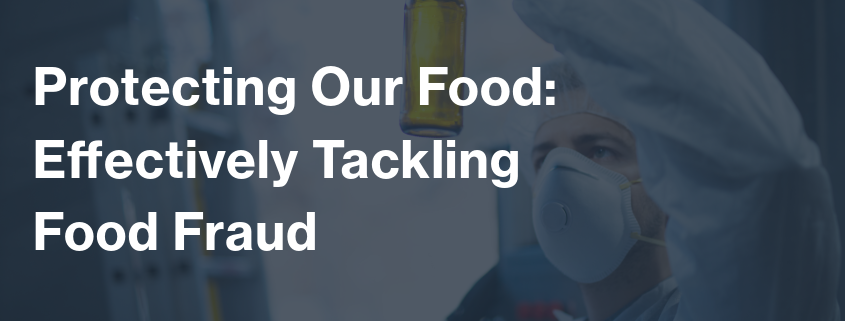





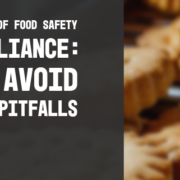
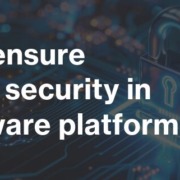
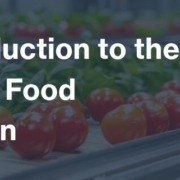
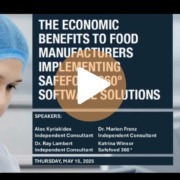


Leave a Reply
Want to join the discussion?Feel free to contribute!